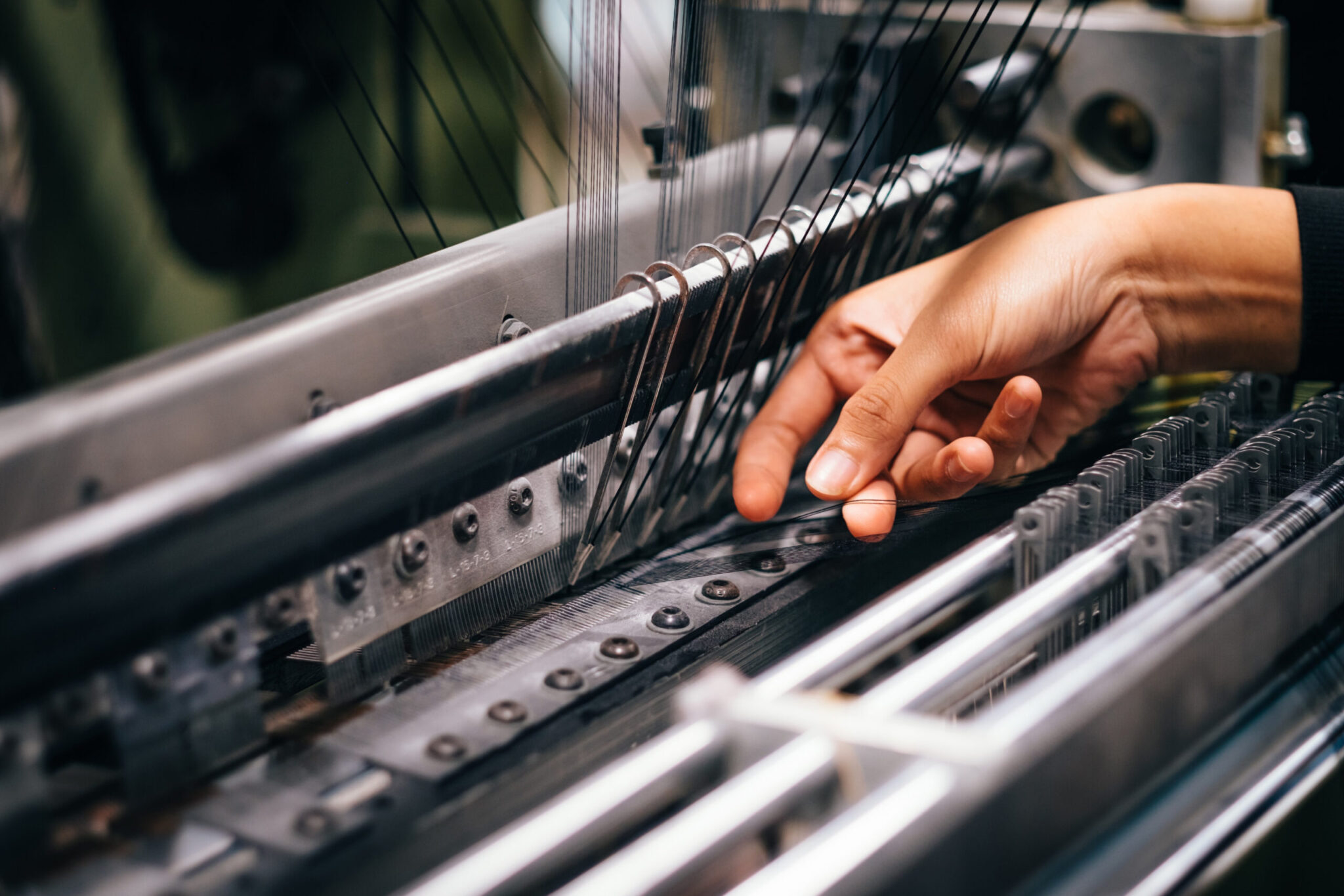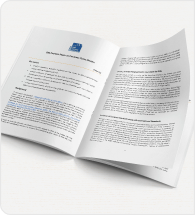Key points
• Ensure fair competition by prohibiting manufacturers from discriminating against SMEs or limiting their access to repair information, spare parts, or tools. SMEs should have equal opportunities to compete with larger manufacturers and authorized repair networks.
• Outside the legal guarantee period, allow for replacing defective products with refurbished ones to maximise sustainability benefits whilst also giving consumers, sellers, and repairers a quicker solution.
• Limit the burden on SMEs, make the European Repair Information Form voluntary and provide economic incentives for businesses (especially SMEs) to use it.
• The Repair Platform should adhere to recognized European and International standards on safety, trustworthiness, and efficiency. It should be user-friendly, cost-free, ensure equity and fair competition. Platform operators must monitor the adherence to essential criteria (e.g. reliability, safety and efficiency) of the companies providing repair services.
• European Voluntary Standard for Repair services: prioritize practicality, ensure SME representation, and align with other relevant pieces of legislation.
• Ensure legal certainty and clear, aligned and proportionate responsibility distribution along the supply chain, avoid overburdening sellers and repairers who also suffer from the consequences of planned obsolescence. Legal certainty entails unambiguous definitions of “manufacturer”, “seller” and “repairer”. These definitions should take into account subcontractors in the repair sector.
Background
The European Commission’s proposal for a Directive on the Right to Repair is part of the Green Deal legislation and emerged in response to growing concerns surrounding restricted repair options and planned obsolescence practices implemented by manufacturers. The directive aims to promote andincentivize product repair, extending their lifespan. It introduces several key obligations, including the provision of a European Repair Information Form, the obligation to repair products beyond the seller’s liability upon consumer request and against a price, information disclosure requirements, and the establishment of repair and refurbishment platforms. Additionally, the directive suggests the development of a voluntary European quality standard for repair services.
SBS welcomes the proposed ‘Right to Repair’ Directive, which creates a new framework to enable more European consumers to access high-quality, safe repairs and will positively affect SMEs specialised in repair services. SBS also welcomes the creation of a European Standard for repair services as a useful nonregulatory measure that will build consumer trust in repair services
SBS supports the market-driven approach to repairs outside the legal guarantee of products, as a way to promote a flourishing and sustainable repair economy in Europe. To create the most effective framework, we support the greatest harmonisation across the EU of the requirements and provide some additional recommendations.
Facilitate repairers‘ access to spare parts and information The right to repair opens up a great opportunity for small and medium-sized businesses specialised in repair services to expand their markets. These SMEs are often closer to customers, making them wellpositioned to provide repair services compared to large manufacturers. To ensure the success of the Directive, repairers should be granted access to spare parts from manufacturers at reasonable prices, for a given amount of time. Additionally, repairers should have free access to all the technical information and training they need, to ensure they can fulfil customer demands and maintain competitiveness.
Manufacturers should provide SMEs with the necessary tools and equipment required for effective and safe repairs. This obligation ensures that SMEs have access to specialized tools and diagnostic equipment needed for servicing specific products. Furthermore, the directive should provide the possibility for repairers to report to competent authorities missing, incomplete, and unavailable technical information, and mechanisms should be put in place to address this issue, saving time and costs. To make the right to repair effective, it is also important to establish some standards on spare parts and create common functions and interfaces, especially because it is not practical to store spare parts for every product for a long time. Having common standards would enable the creation of a market for compatible spare parts. This will benefit both manufacturers and SME repairers, making repairs easier and more accessible to everyone.
Allow the replacement of defective products with refurbished ones The Right to Repair Directive stipulates that sellers must repair goods when the cost of replacement equals or exceeds the cost of repair. However, the directive lacks sufficient consideration of refurbishment alternatives outside the legal guarantee period. Consumer decisions on repair versus purchasing new items are multifaceted, involving factors such as cost-effectiveness, durability, repair accessibility, and time. Thus, the directive should also consider that refurbishment over repair often provides a more practical resolution in terms of speed, logistics, cost, energy consumption, and product circularity for both repairers and consumers. To truly establish effective circular business models, manufacturers, sellers, and repairers need the freedom to offer customers the choice of replacing defective items with refurbished ones. This can be achieved by expanding the definition of “repair” to encompass the option of replacing defective items with refurbished ones, outside the legal guarantee period. It is also important that the definition of refurbishment includes “homemade” or “selfmade” components as many SMEs are specialised in the production of these compatible spare parts, which perform at least equally to original ones and most of the time far cheaper and quickly available. Additionally, promoting consumer awareness about the importance of returning faulty items to sellers and incentivizing such practices would enhance sustainability outcomes and stimulate the growth of a refurbished goods market.
The European Repair Information Form should be voluntary
With regard to the new instruments introduced by the proposed directive, specifically the European repair Information Form (Art. 4) and the online repair platform (Art. 7; Annex II), it is essential that these instruments do not introduce excessive administrative and economic burdens on SMEs and avoid the duplication of requirements and information. Given the significant load of sustainability requirements that SMEs will be asked to comply with in the upcoming years, SMEs will face increasing complexity in both revolutionising procedures and in coping with the new regulations. Therefore, SBS considers that the mandatory nature of the European Repair Information Form is disproportionate and could be counterproductive. We suggest making the European Repair Information Form voluntary and providing SMEs with incentives to use it. Moreover, producers should be required to provide all available information necessary for the repairer to complete the European Repair Information Form. We hold the view that economic incentives for businesses and for consumers, rather than coercive measures, are crucial for fostering a repair-oriented mindset within the EU. In this context, we recommend refining fiscal instruments, such as lowering VAT rates, and introducing temporary subsidies for businesses, particularly SMEs and microenterprises. It is likewise important to tackle the shortage of skilled technical personnel and provide SMEs with comprehensive guidance and trainings, enabling them to deliver repair services of the highest quality.
A user-friendly online Repair Platform ensuring safety, equitable access and fair competition
Article 7 of the proposal mandates Member States to guarantee the presence of at least one online matchmaking platform dedicated to repairs and refurbishments. The repair platform, which will help consumers assess and compare the characteristics of different repair services, will have to be made available to businesses free of charge. The platform will have to be user-friendly and ensure high-quality repair standards through the integration of professional qualification requirements where present in national legislation for the activities concerned. We advocate aligning the platform with recognized European and International standards and technical specifications concerning accessibility, trustworthiness, and safety prerequisites for digital platforms (e.g., ISO/IEC 27001, ISO 42500, ISO/TS 42501:2022, ISO/TS 42502:2022). Furthermore, we recommend that the platform operator conducts monitoring activities of those companies offering repair services to verify their adherence to essential criteria, including reliability, safety, and efficiency. To ensure consumer safety is protected and that standard quality procedures are applied, consumers should be able to easily individuate original equipment manufacturers and those repairers who meet the quality standards.
The European voluntary standard for repair services
SBS appreciates the introduction of a European voluntary standard for repair services (Recital 27) and recommends issuing a standardisation request to the European standardisation organisations (ESOs), rather than opting for voluntary cooperation on a standard between businesses, public authorities, and other stakeholders. A standard developed by the ESOs would ensure that the European standard is adopted by the national standards bodies of the European Economic Area (and beyond) and offers the advantages of credibility, expertise, broad representation, legal integration, efficiency, and market acceptance. Attention must be paid to the unique challenges SMEs may face, encompassing regulatory complexity, facing conformity assessment and other implementation costs. Ensuring the practical applicability of the European standard developed in line with the directive is paramount, particularly for SMEs and microenterprises. Therefore, it is important SMEs are involved in the development of this standard so that their needs and specificities are adequately addressed. The standard on repair services should align with current and upcoming standards supporting other pieces of Green Deal legislation (e.g., Ecodesign for Sustainable Products Regulation).
Legal certainty and liability issues
The Right to Repair Directive does not provide sufficient guidelines on liability allocation in case of damage or safety issues arising from repairs performed by SMEs. Essential terms such as repairer (Art. 2(2)), seller (Art. 2(3)), producer (Art. 2(4)), and distributor (Art. 2(7)) should be defined unambiguously and also encompassing the role of subcontractors. Uncertainty regarding liability can increase legal risks and insurance costs for SMEs. This potential exposure to liability can discourage SMEs from offering repair services or force them to increase prices to compensate for potential risks, adversely affecting customer affordability and satisfaction. SBS insists on the need to provide clear and comprehensive rules on the redistribution of responsibility in the supply chain resulting from this directive while ensuring consistency and complementarity with existing and future legislation. The repairer may in no way be given responsibilities beyond his purely product maintenance activity, and in case of the termination of a manufacturer’s business, the seller cannot be made subsidiarily responsible for a repair obligation. Moreover, we believe that all non-EU manufacturers operating in the EU single market should be obliged to appoint an authorised representative in the EU. If there is no authorised representative, distributors should not be made financially responsible for producers’ obligations.
Conclusion
In conclusion, the highlighted key points collectively underline the significance of proportionality, feasibility and support for SMEs within the proposed ‘Right to Repair’ Directive. SBS demands to enable SME access to relevant repair information, spare parts, and necessary tools and training. Additionally, the directive should consider refurbishment as an alternative to repair after the legal guarantee period has expired, as it often aligns with circularity and can be more practical for consumers, sellers, and repairers. To ensure effective implementation, minimal administrative burdens on SMEs are stressed, particularly about the voluntary nature of the European Repair Information Form, supported by financial incentives. It is of paramount importance to establish an online Repair Platform that not only guarantees user-friendly accessibility but also upholds safety, equitable access, and fair competition. This platform should adhere to established European and International standards and undergo monitoring activities of service providers to ensure reliability, safety, and efficiency. The proposed European Voluntary Standard for Repair is seen as a positive step, and it should ensure SME viability, SME representation, and alignment with other legislations. The directive should ensure legal clarity and coherent and balanced responsibility allocation across the supply chain, to prevent undue burdens on sellers and repairers and to mitigate uncertainty and potential adverse effects on SMEs. In the broader context, this directive emerges as a constructive and progressive initiative in line with the Green Deal legislation. It not only supports consumers’ access to quality repair services but also nurtures a thriving repair-oriented economy.



























